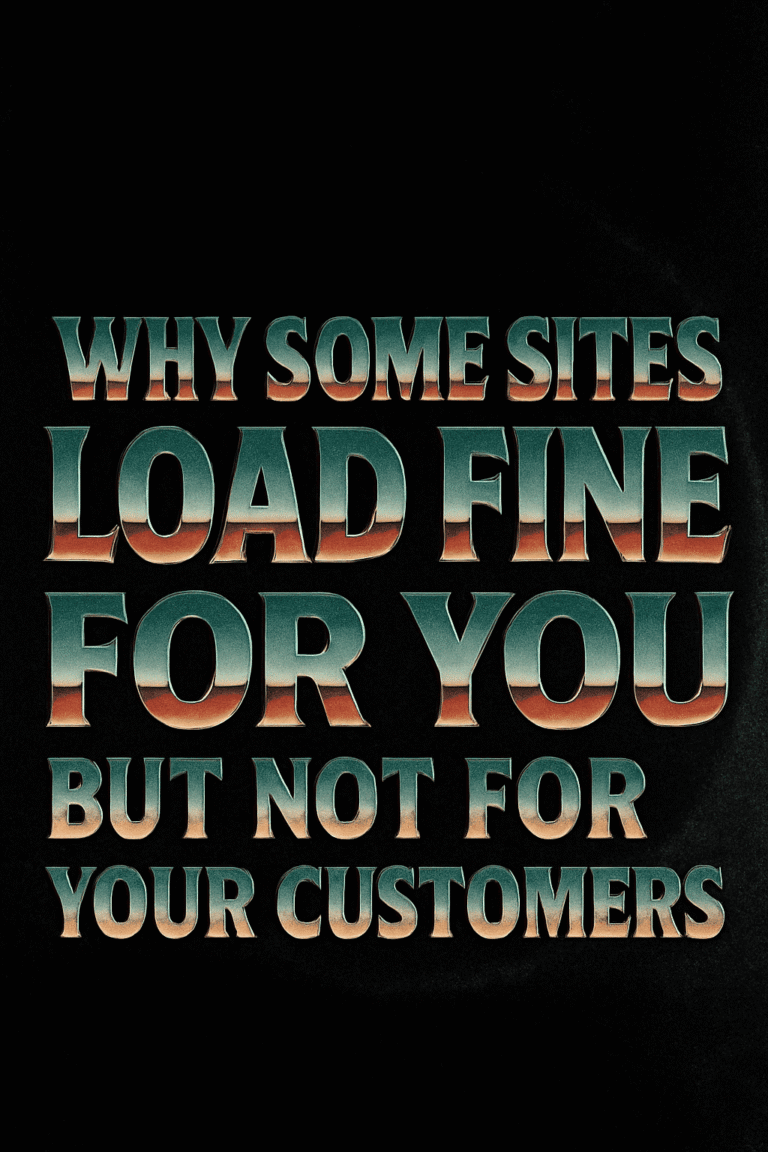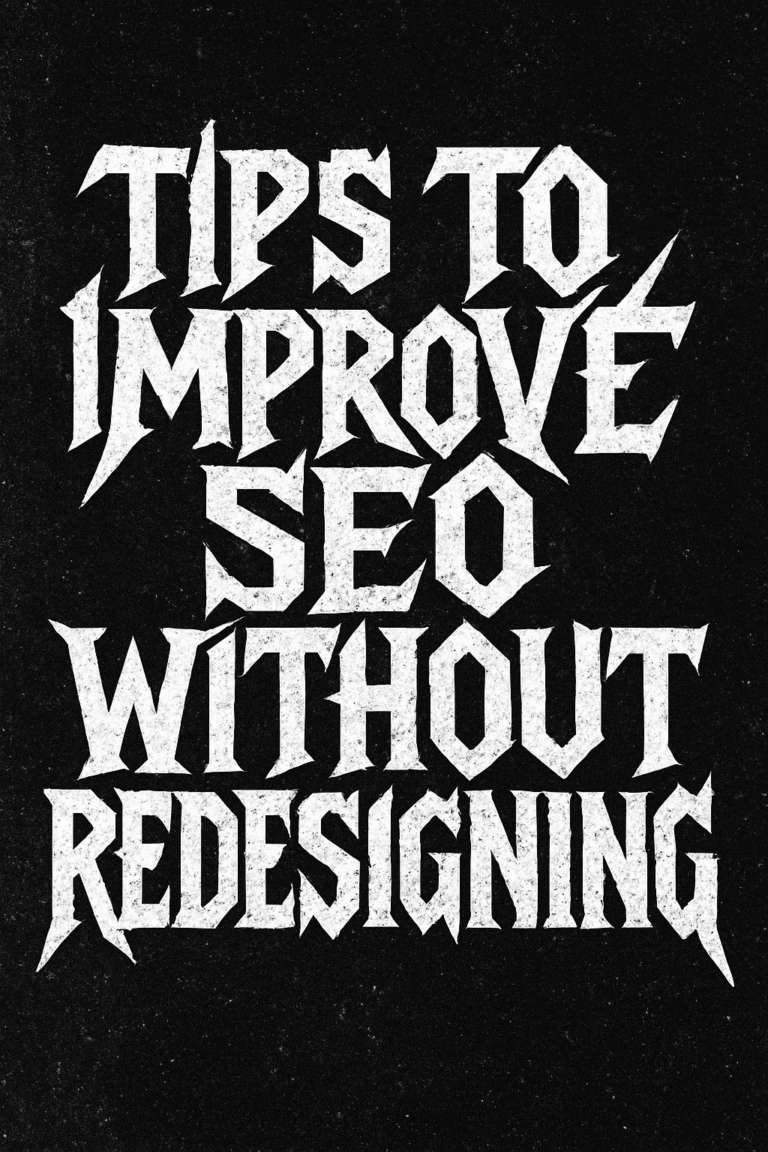
As the clock ticks towards a new year, it’s not just about making personal resolutions. It’s also the perfect time to breathe new life into your online presence. Think of your website as the face of your brand in the online world – it deserves a fresh start just as much as you do. This is where the magic of a website audit comes into play. A website audit is much like a health check-up, but for your online domain. It involves a thorough examination of your site’s overall performance, including its search engine optimization (SEO), user experience (UX), content quality, and security measures. This process helps identify any existing issues that might be hindering your site’s effectiveness and lays the groundwork for making impactful improvements.
Our goal in this post is to escort you through the essential steps of conducting a comprehensive website audit for the new year. Whether you’re looking to enhance your site’s SEO, improve user engagement, or bolster its security, this guide will provide you with the insights and tools needed to make your website shine brighter in the upcoming year. So, let’s embark on this journey together and set the stage for a successful, prosperous online presence in the new year!
The Significance of a Website Audit
A website audit is a comprehensive examination of various elements that contribute to your website’s performance, visibility, and user experience. It’s like peeling back the layers to examine the inner workings of your site. This process includes analyzing the technical aspects, such as SEO, site speed, and mobile responsiveness, as well as the content quality and user engagement strategies. It also involves scrutinizing the site’s structure and design for ease of navigation and assessing compliance with current web standards and security protocols. Essentially, a website audit is a deep dive into your website to pinpoint areas that excel and those that need improvement.
The Role of a Website Audit in Improving Online Presence
The role of a website audit in enhancing your online presence is multifaceted. By identifying and addressing issues related to SEO, you can improve your site’s visibility and ranking on search engines, making it easier for potential customers to find you. Analyzing user experience elements ensures that visitors have a positive interaction with your site, increasing the likelihood of conversion and return visits. Additionally, a website audit helps to ensure that your content remains relevant and engaging, which is crucial in retaining audience interest and loyalty. In terms of technical performance, regular audits can keep your site running smoothly, thus avoiding downtime or slow loading times that could deter visitors.
How a New Year Presents an Ideal Opportunity for Website Improvements
The start of a new year symbolizes a fresh beginning and is often seen as an opportune time for renewal and change. For your website, this is a perfect moment to reflect on the past year’s performance and set goals for the year ahead. Conducting a website audit at this time allows you to start the year with a clear understanding of where your website stands and what improvements can be made. It’s a proactive step towards ensuring that your site aligns with your business objectives and is fully equipped to meet the evolving needs of your audience. Moreover, with the digital landscape constantly changing, an annual audit can help keep your site up-to-date with the latest trends and best practices, giving you a competitive edge in the online world.
Key Areas to Focus on in Your Website Audit
Conducting a website audit can feel overwhelming due to the multitude of aspects involved. Focusing on key areas can make this process more manageable and effective. Here are essential areas to concentrate on during your website audit:
SEO Optimization
- Reviewing Keywords and Meta Tags: Your website’s visibility on search engines largely depends on the right use of keywords and meta tags. Audit these elements to ensure they align with current best practices and effectively target your audience. Are your chosen keywords still relevant? Do your meta tags accurately describe your site’s content?
- Analyzing Backlinks and Content Relevance: High-quality backlinks improve your site’s authority and search engine ranking. Analyze your backlinks for quality and relevancy. Also, assess your content for its relevance to your target audience and current trends, ensuring it adds value and engages visitors.
User Experience (UX)
- Navigation and Layout Analysis: A site that’s easy to navigate and pleasant to browse retains visitors longer. Evaluate your website’s navigation structure and layout. Is the information hierarchy logical? Are CTAs (Call to Actions) clear and effective?
- Mobile Responsiveness Check: With a growing number of users accessing websites via mobile devices, your site must perform well on these platforms. Check how your website displays on various devices and resolve any issues to provide a seamless mobile experience.
Website Performance
- Speed Tests and Optimization Strategies: Site speed is crucial for user experience and SEO. Utilize tools to test your website’s loading times and implement strategies to enhance performance, such as optimizing images and minimizing code.
- Identifying and Fixing Broken Links: Broken links can frustrate users and harm your SEO efforts. Scan your site for any broken links and either fix them or remove them.
Content Audit
- Evaluating the Relevance and Quality of Existing Content: Regularly review your content to ensure it remains accurate, relevant, and engaging. This includes checking for outdated information, redundancy, and opportunities to improve quality.
- Planning for New, Engaging Content in the New Year: Develop a content strategy for the upcoming year. Consider incorporating new topics, formats, or a content calendar to keep your website fresh and appealing.
Security Check
- Updating Security Protocols and Software: Cybersecurity is critical for protecting your site and users’ data. Ensure all security software is up-to-date and consider implementing additional measures like SSL certificates and firewalls.
- Reviewing Compliance with Data Protection Regulations: With regulations like GDPR, it’s vital to ensure your website complies with data protection laws. Review your privacy policies and data handling practices for compliance.
Utilizing Tools and Resources for Effective Auditing
An effective website audit requires not only a keen eye but also the right set of tools and resources. Here’s a guide to some essential tools that can aid you in various aspects of the audit, along with insights on when to seek professional assistance.
List of Recommended Tools for Various Aspects of the Audit
- SEO Optimization Tools
- Google Analytics: For tracking website traffic and user behavior.
- SEMrush or Ahrefs: These tools offer comprehensive capabilities for keyword research, backlink analysis, and competitor insights.
- Moz: Useful for on-page SEO analysis and identifying SEO opportunities.
- User Experience (UX) and Mobile Responsiveness Tools
- Google’s Mobile-Friendly Test: Quickly check how well your website works on mobile devices.
- Crazy Egg or Hotjar: These tools provide heatmaps and user session recordings to analyze user interaction on your site.
- Website Performance Tools
- GTmetrix or Google PageSpeed Insights: Evaluate your website’s loading speed and receive suggestions for improvement.
- Broken Link Checker: This tool helps find and fix broken links on your site.
- Content Audit Tools
- Screaming Frog: A useful tool for crawling your website and analyzing various content elements.
- Copyscape: Check for plagiarism and ensure the uniqueness of your content.
- Security Check Tools
- Sucuri SiteCheck: Scan your website for known malware, blacklisting status, website errors, and out-of-date software.
- SSL Server Test by Qualys SSL Labs: Test the SSL/TLS security of your web server.
Importance of Professional Assistance Where Necessary
While these tools provide valuable insights, they are most effective when used in conjunction with professional expertise. Certain aspects of a website audit, especially those related to technical SEO, security, and complex UX issues, may require a deeper level of analysis and understanding than what automated tools can offer.
Seeking professional assistance is crucial when:
- Complex Technical Issues Arise: Professionals can provide tailored solutions to complex problems like server configuration, advanced SEO tactics, or intricate code optimizations.
- Objective Analysis is Required: An external expert can offer an unbiased view of your website’s performance and suggest improvements that you might have overlooked.
- Keeping Up with Best Practices: Professionals stay updated with the latest trends and best practices in web development, SEO, and security, ensuring your website remains competitive.
Creating an Action Plan Post-Audit
Once your website audit is complete, the next crucial step is to develop a clear and actionable plan. This plan will guide you in addressing the identified issues and implementing improvements effectively.
Prioritizing Identified Issues
- Categorize Issues by Impact: Start by categorizing the issues based on their potential impact on your website’s performance and user experience. High-impact issues, such as major SEO shortcomings or severe security vulnerabilities, should be addressed first.
- Consider Resource Allocation: Assess the resources (time, budget, manpower) required to tackle each issue. Some fixes might be quick and easy, while others could require more extensive work.
- Urgency and Feasibility: Prioritize issues that are both urgent and feasible to fix in the short term. For instance, a broken link can be fixed quickly, but a complete overhaul of your content strategy might need more time.
Setting Realistic Goals and Timelines for Updates and Improvements
- Short-Term vs Long-Term Goals: Divide your goals into short-term (immediate fixes) and long-term (strategic improvements). Immediate fixes might include repairing broken links or updating outdated content, while long-term strategies could involve reworking your SEO approach or redesigning the site for better UX.
- Develop a Timeline: Create a realistic timeline for addressing each issue. Ensure that the timeline is achievable considering your available resources. This could mean setting weekly goals for small fixes and monthly or quarterly milestones for larger projects.
- Flexibility and Review: Keep your action plan flexible. As you start implementing changes, new challenges or opportunities might arise. Regularly review and adjust your plan accordingly.
- Measurable Objectives: Set measurable objectives for each goal. For example, if improving site speed is a priority, define what success looks like – perhaps achieving a certain score in Google PageSpeed Insights.
- Assign Responsibilities: If you’re working with a team, clearly assign responsibilities for each task. Knowing who is accountable for what ensures that tasks are completed efficiently.
It’s crucial to recognize that a website audit is not just a routine check-up; it’s a strategic investment in your online success. In the digital age, your website often forms the first and most lasting impression of your brand. By dedicating time and resources to a thorough audit, you’re not just fixing problems; you’re proactively enhancing and future-proofing your online presence. This process helps you stay ahead of trends, meet your audience’s evolving needs, and, most importantly, keeps your site functioning as an effective tool for business growth.
As we embark on a new year, let your website reflect the growth and aspirations of your brand. A well-audited website is like a well-oiled machine, ready to perform at its best. It’s more than just an optimized site; it’s a testament to your commitment to excellence and customer satisfaction. Imagine a website that not only ranks higher in search engines but also provides a seamless, engaging experience to every visitor. That’s the power of a successful website audit.
Take this journey of website auditing as an opportunity to renew, refresh, and rejuvenate your online presence. The efforts you put in today will pave the way for a year filled with triumphs and successes. Here’s to a new year and a new chapter in your online story, one where your website stands as a beacon of quality, innovation, and excellence. Let’s make this year the year your website truly shines!





